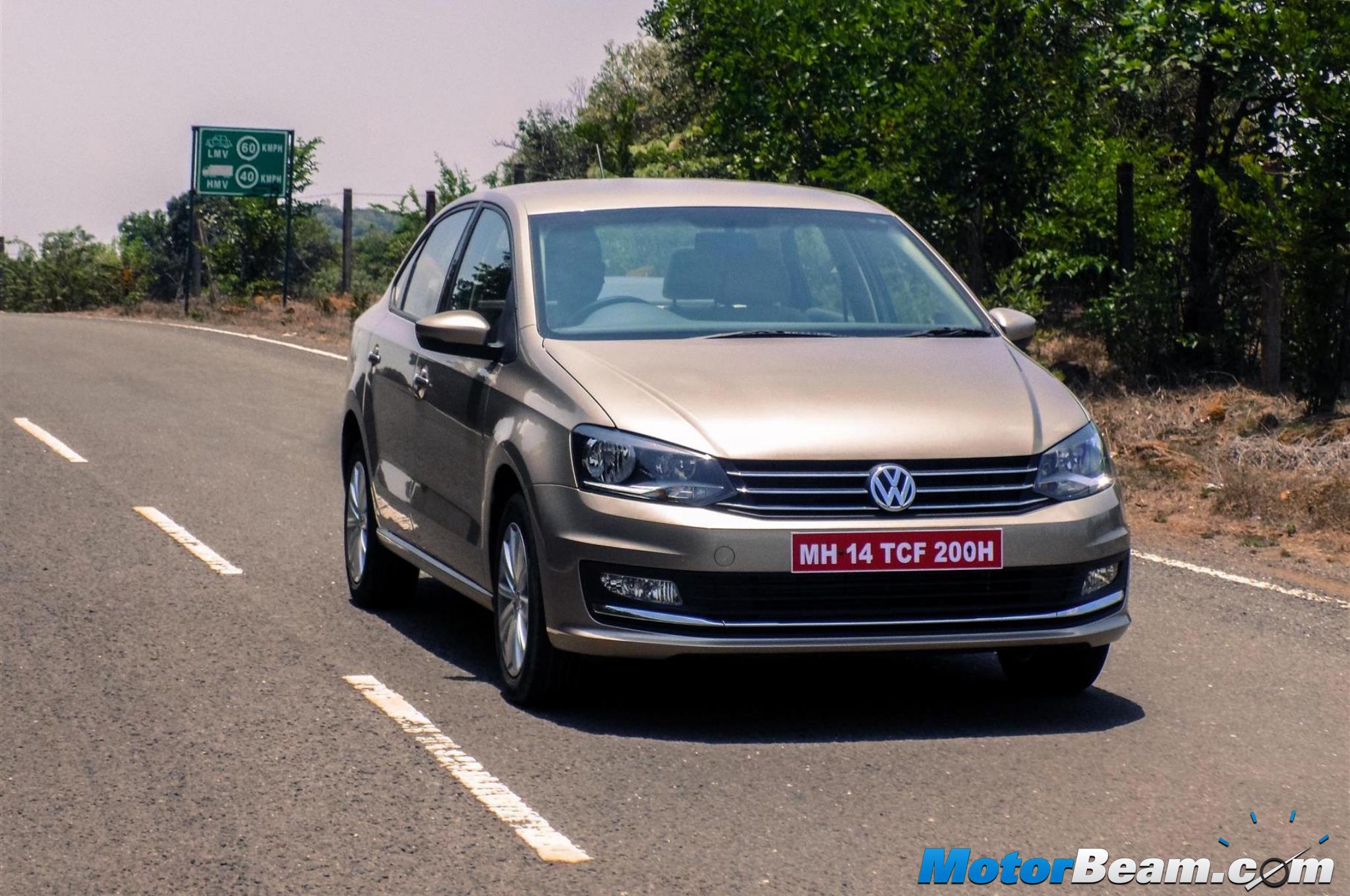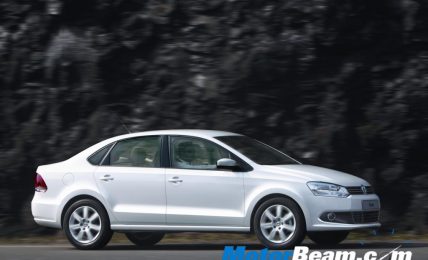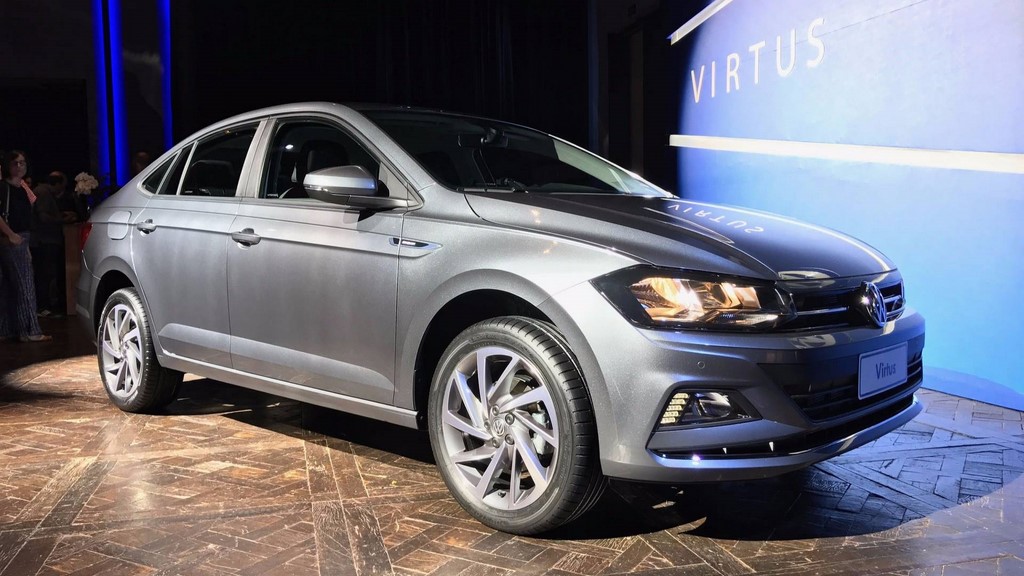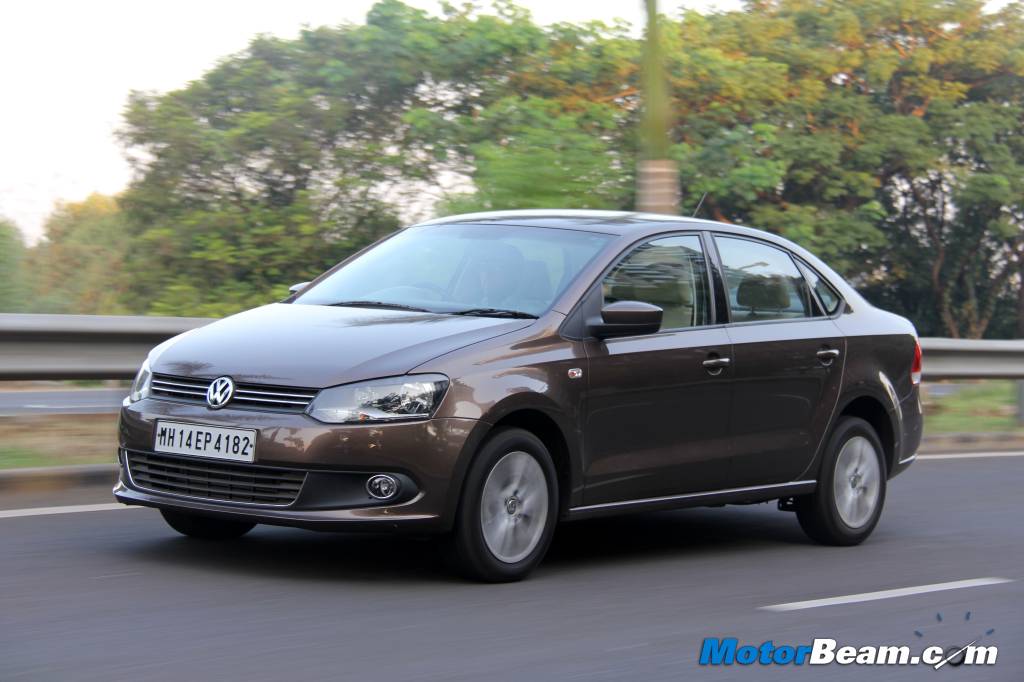
Volkswagen Vento Facelift Review
Car Tested: 2015 Volkswagen Vento Facelift (1.5 DSG AT)
Price OTR Mumbai: Rs. 12.78 – 13.32 lakhs
The 7-speed DSG gearbox is the real gem in the Vento diesel, it’s the best in class
The amount of action witnessed in the C-segment this year has been unparalleled, never have we seen this popular segment get new cars with updates in such short time. Post the arrival of the new Honda City, every other rival had to do something to become relevant again and among them it was Volkswagen who took the bold step of matching a 7-speed DSG automatic gearbox to its new made for India diesel engine. Thus the Vento is among the three diesel automatics in the segment, the other two being the Skoda Rapid and Hyundai Verna. We witness the new 1.5-litre diesel mill in the Vento Automatic to gauge how the facelift has made VW’s entry-level India sedan a lot more appealing.
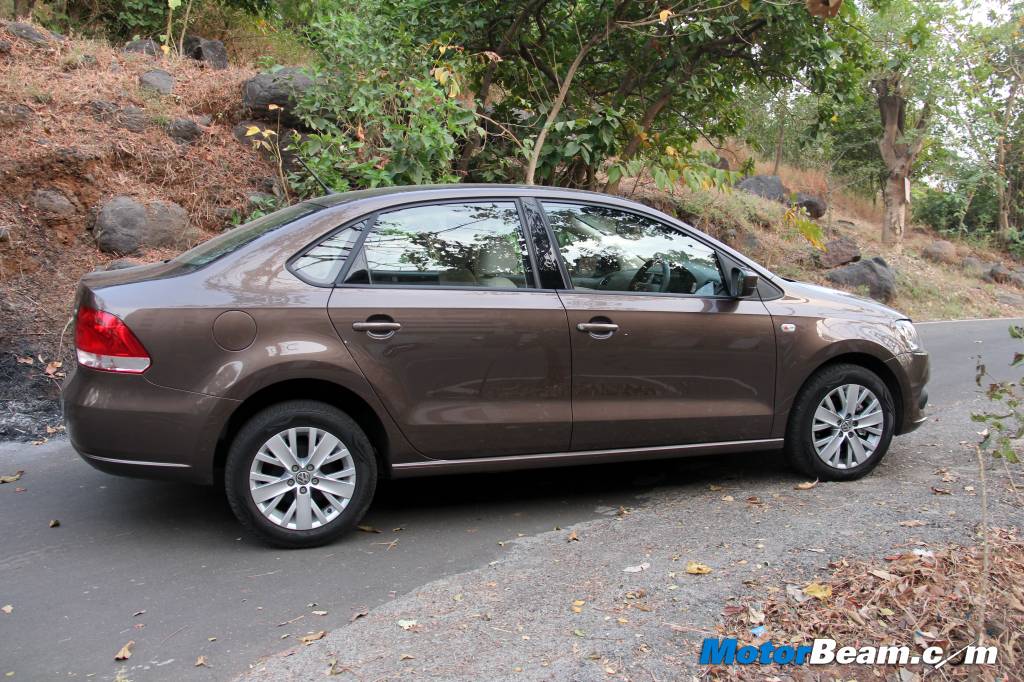
Exteriors – Volkswagen has given the Vento a minor update as far as the styling goes and the same has worked well to boost the appeal of the car. The Vento’s design is part of Volkswagen’s timeless styling and with the subtle changes at the front, the vehicle does come across as more striking. There is chrome added but not in excess and it’s similar to the updated Polo. The headlights also get a revision and the changes are quite minimal on the side and rear but one will immediately notice the new alloy wheels which have a classy design. The new Toffee Brown shade which is so popular on the Jetta is now offered on the Vento and it does make you confuse the Polo based sedan with the bigger VW.
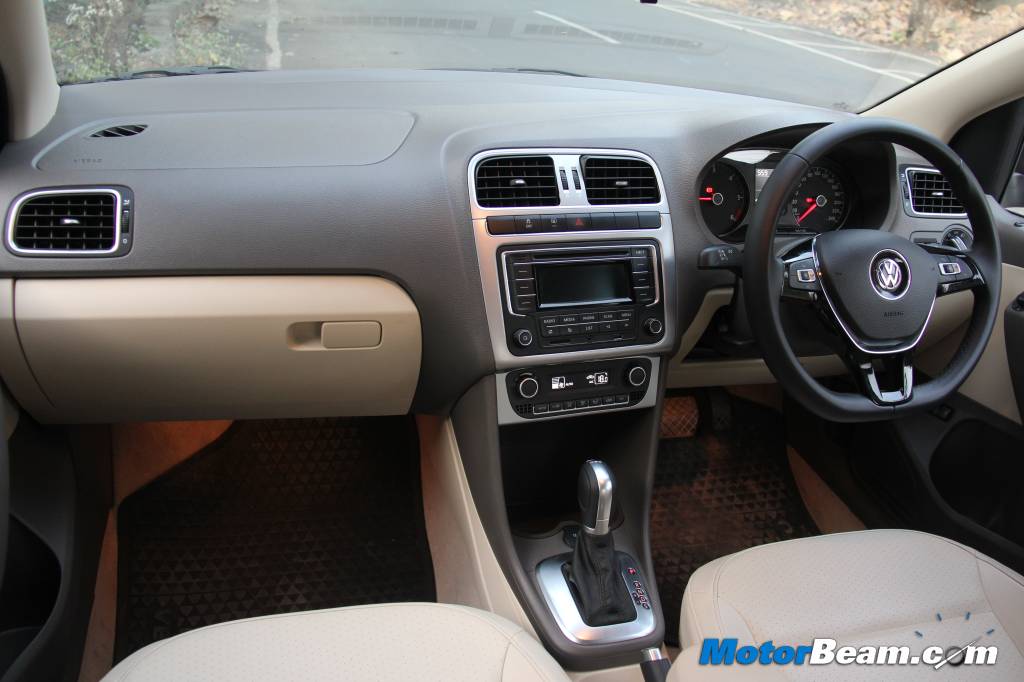
Interiors – Where the Vento has got a bigger change is the interiors. The dashboard is the same as before but the centre console gets a nice silver finish. The biggest differentiator from its predessor is the new 3-spoke steering wheel which has a flat bottom and is terrific to hold. It also gets new controls so you can toggle through the multi-information display using the steering mounted controls, you no longer have to press buttons on the right lever to do it. The font in the instrument cluster is now easier to read as it is bigger. Unlike Skoda, Volkswagen hasn’t removed the lever on the front seat which allows the rear passenger to adjust legroom from the comfort of his seat. Space inside the cabin is generous and the rear bench offers plenty of all-round room for occupants.
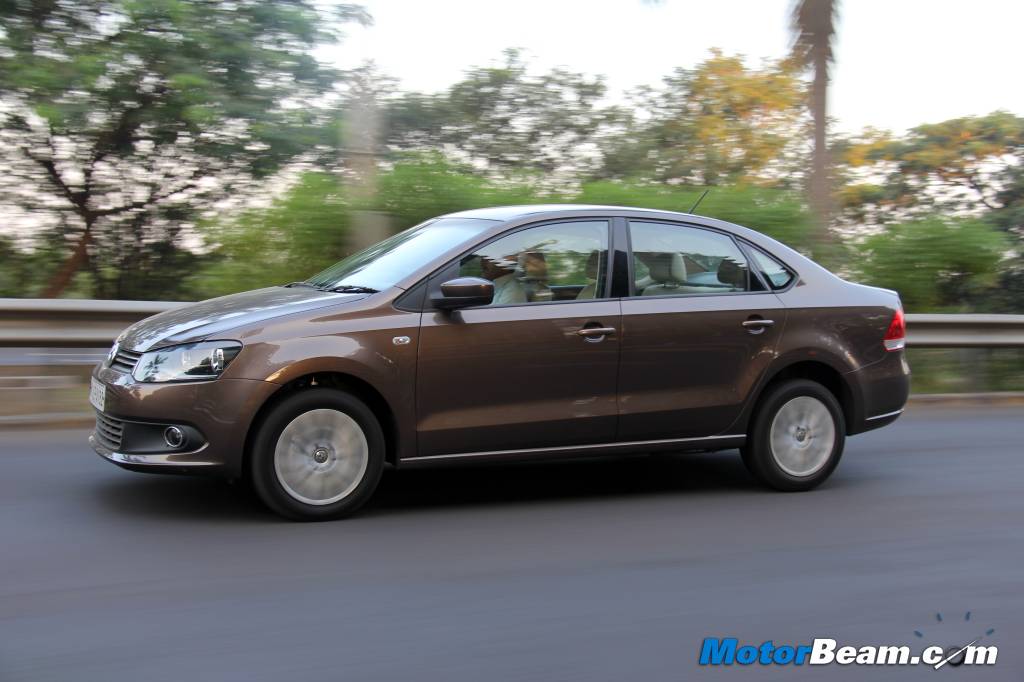
Performance – Volkswagen has given the Vento a new engine, it is essentially the same 1.6-litre motor but with reduced capacity for complying with small car norms (in the Polo). Offered in the higher state of tune, the Vento 1.5 generates the same output as the 1.6-litre TDI which is no longer powering any VW car in India. With 105 PS of peak power at 4400 RPM and 250 Nm of peak torque betwee 1500-2500 RPM, the Vento isn’t the most powerful car in its segment but somehow feels faster than the numbers suggest. It now boasts of improved low-end punch although turbo lag is evident but it’s really the mid-range where this oil burner shines. Top-end is lacking and the motor doesn’t rev as freely as the old mill. 0-100 km/hr takes 11.29 seconds as per our VBOX tests which is quick but could be quicker as the autobox doesn’t let you launch at peak RPM.
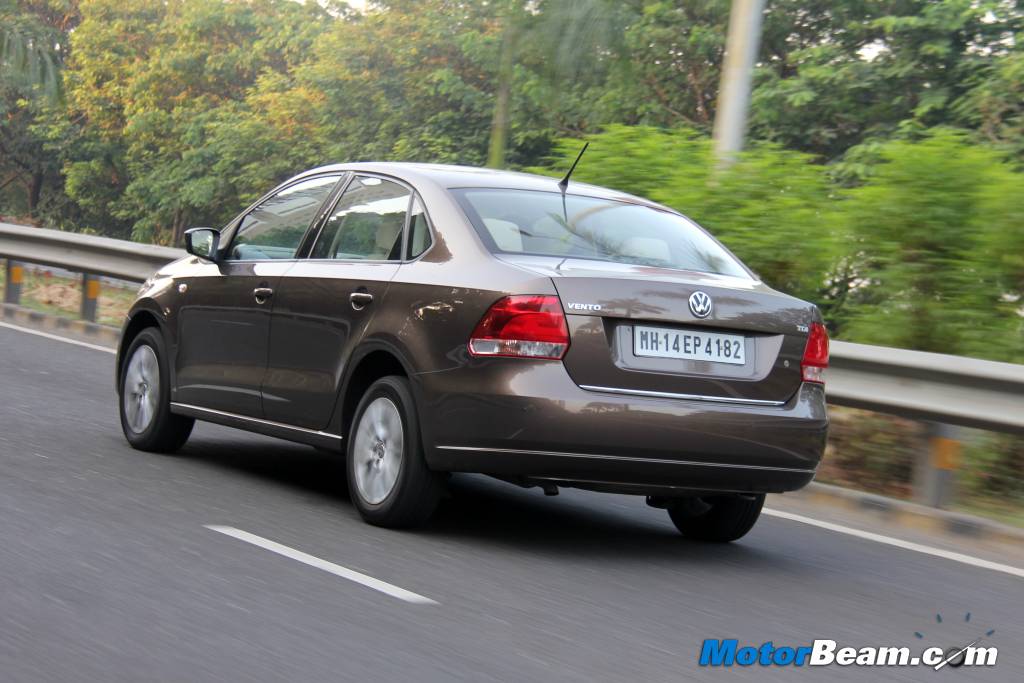
The dual clutch automatic gearbox is a gem and shifts cogs better than you could manually do
This new diesel engine is married to a 5-speed manual gearbox and a 7-speed dual clutch automatic transmission, the latter being the talk of the town for obvious reasons. The same gearbox does duty in the Vento 1.2 TSI as well and is a quick shifting transmission, responding instantly to your needs. There are three driving modes – D, S and manual, the latter two bringing urgency to the Vento’s performance. In D mode, the gearbox goes about its business in a silent manner but in the other two modes, it holds gears for longer, extracting each and every horsepower from the 1.5-litre powertrain. Although quick to upshift, the gearbox isn’t as quick to downshift and you really need to give it a prod or two to wake it up to go down a gear or two. 100 km/hr comes up in fourth gear while the redline comes in at around 5000 RPM. In 7th gear at 100 km/hr, you will be doing 1800 RPM on the tachometer so cruising in this car is a relaxed affair for both the driver and the engine.
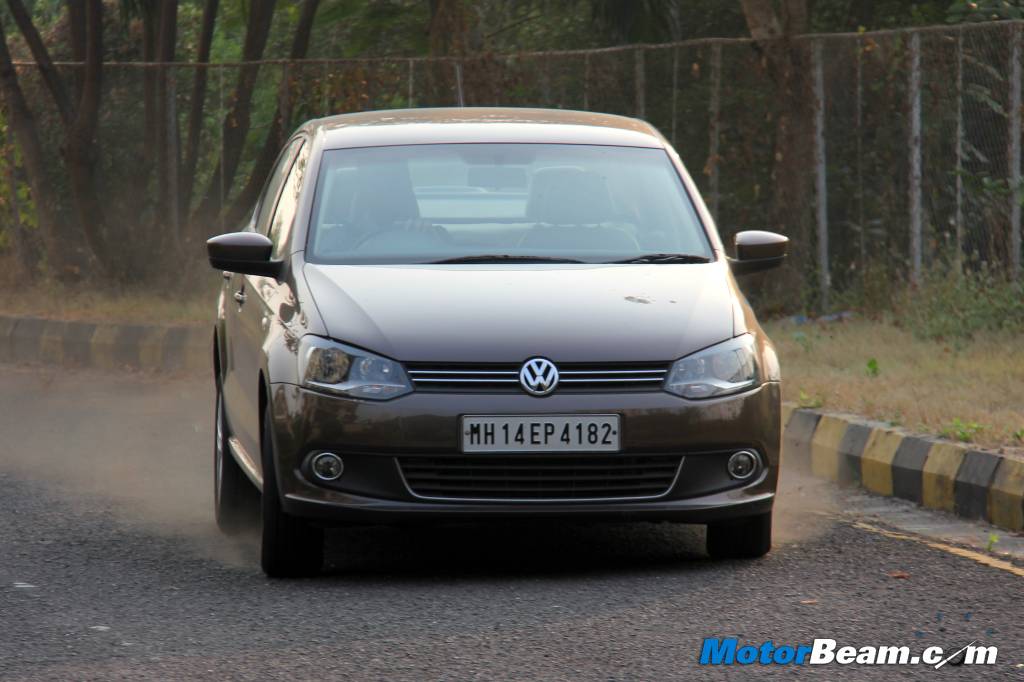
Driving Dynamics – There hasn’t been much of a change on this front. The Vento continues to have a good balance of ride and handling with grip levels being better than before thanks to the change in tyres to Apollo Alnacs. Ride quality is good but bad roads does make the suspension feel a bit uneasy and the setting is itself on the softer side which is great at low speeds but not so good at high speeds as there is quite a pitch and wallow over road undulations. The steering has good feel, although it isn’t very feedback rich like the Ford Fiesta, it still is engaging enough for you to be confidently pushing the car around corners. Braking performance is excellent as always has been the case with VW cars.
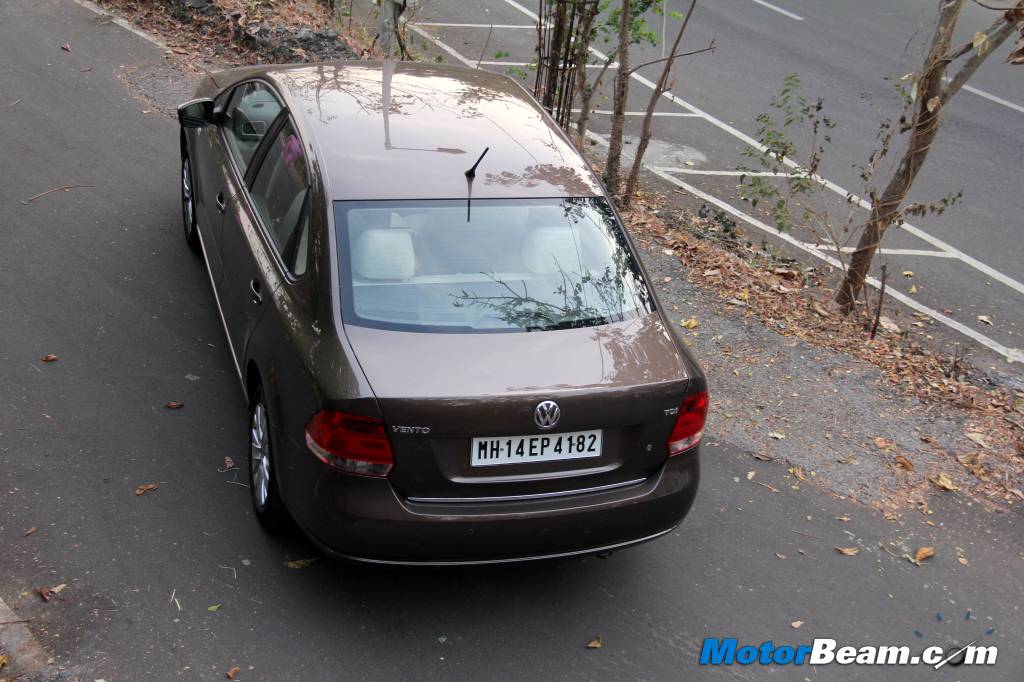
Verdict – The Volkswagen Vento has been doing decent numbers and the facelift has brought it back into contention. While the Vento doesn’t excel in certain areas like space, equipment or even performance for that matter, it does boast of carrying the best engine-gearbox combo in its segment for both petrol and diesel models. If you are looking for the best diesel automatic in the C-segment, look no further than the Vento DSG. Not only does it have the best autobox on offer but is also the best put-together car in the segment with fantastic build quality which impresses you all the time.
The Volkswagen Vento with a DSG automatic was just the need of the hour as it offers one the best of both worlds, performance and economy. With the dual clutch automatic, the Vento DSG is more efficient than the manual gearbox equipped Vento, making it not only convenient but also more frugal.
What’s Cool
* Improved interior feel and build quality
* Engine and gearbox combo
* Balanced dynamics
What’s Not So Cool
* Could do with more equipment


